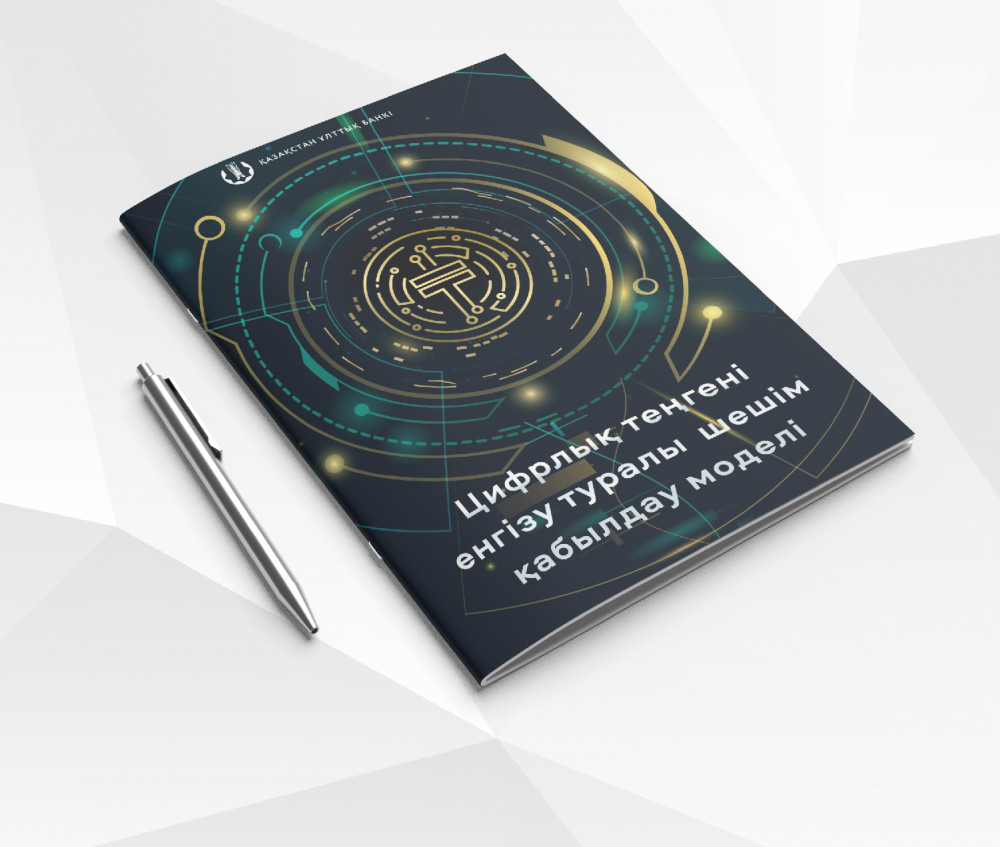Decision Making Model for Digital Tenge implementation is developed, Delovoy Kazakhstan reports.
The National Bank of Kazakhstan (NBK) and Payment and Financial Technologies Development Center of the NBK (PFTDC) have released report ‘Decision Making Model for Digital Tenge Implementation’. Based on results of the study obtained with the use of this model, a final decision will be made by the end of 2022 to introduce the Central Bank Digital Currency in Kazakhstan.
The ultimate effect for consumers of payment services will be the priority in making decision to implementation of Digital Tenge. The NBK and PFTDC model takes into account the analytical tools recommended by international organizations (WEF, G7 Summit, IMF) as well as the approaches of foreign authorities. The Model also provides for studies to assess the technological feasibility of Digital Tenge, potential economic benefits and costs, regulatory capabilities of the system, and the potential for ecosystem development.
Technological experiments, economic modeling, design sessions with stakeholders are provided as the analysis tools. End-to-end test of Digital Tenge technological platform with market participants and consumers is scheduled for the 4th Quarter of 2022.
In order to objectively interpret results of the study, Advisory Board of the Digital Tenge project was established bringing together independent international experts and employees of international financial organizations. An important success factor in development of the project is also creation of an ecosystem of Digital Tenge with the financial market participants. For these purposes Digital Tenge Hub, a collaborative platform, was created for the market participants, infrastructure players, and international partners.
Introduction of Digital Tenge will increase financial inclusion, including through an option to make offline payments. The Digital Tenge infrastructure will become an extra tool for participants of the financial market and government agencies, which will provide an opportunity to create innovative services based on smart contract technology. In future, introduction of Digital Tenge will also enhance cross-border payments.
The report ‘Decision Making Model for Implementation of the Digital Tenge’ is available on a page of the NBK website in the section ‘Digital Tenge: Pilot Project’ as well as on a website of NBK Center for Development of Payment and Financial Technologies – payfintech.kz.
Digital Tenge
In 2021, the National Bank of the Republic of Kazakhstan implemented the Digital Tenge Pilot Project in close cooperation with financial market participants, the expert community, and international partners.
The milestones of the Pilot Project in 2021
- Advisory Report published for public comment in May.
- From May to December, a series of meetings and discussions were held with market participants, the expert community, government agencies, and international partners.
- In June, a pilot project was launched to assess the Digital Tenge’s technical feasibility within which a prototype platform was created, and several scenarios were tested with the external participants being connected via participation of second-tier banks.
- In September, surveys and interviews with market participants were conducted to clarify priorities and needs in the new payment instruments development.
- In November, the Pilot Project’s preliminary results were presented within the framework of the IX Congress of Financiers of Kazakhstan.
- In December, a report was prepared on the Pilot Project’s results.
The main objectives of the 2021 Pilot Project were to test the digital tenge concept’s feasibility through experimental confirmation of the retail platform’s technological viability based on distributed ledger technology, as well as to determine the main parameters of the CBDC Model for Kazakhstan in cooperation with all stakeholders.
As part of the Pilot Project, the basic scenarios for the Digital Tenge life cycle were implemented from issuing and distribution to purchases and transfers via Digital Tenge.
As a result of the project, hypotheses related to the digital tenge concept`s technological feasibility were confirmed and a list of issues and tasks for further development was created. In addition, a primary model was developed for assessing the impact of the digital tenge on the economy, financial stability and monetary policy, and possible approaches to regulation were also prepared.
Decision-Making Model development in 2022
In 2022, the National Bank continued to study the benefits and costs of the possible implementation of the Digital Tenge. Currently, there is an ongoing work to expand the platform’s technological functionality and quantitative economic research.
In order to involve financial market participants and other stakeholders, the Digital Tenge Hub collaborative platform was launched in June 2022 bringing together all interested parties to jointly study the issues of implementing a national digital currency in Kazakhstan.
In order to complete the assignment given by the Head of State, the National Bank developed a Decision-Making Model on the implementation of digital tenge to develop a recommended decision on the need to create national digital currency in Kazakhstan, to provide related comprehensive study, and to determine the benefits and costs of the possible implementation of Digital Tenge.
The model considers the tools recommended by international organizations as well as the approaches of foreign regulators. The Model includes the studies to assess the Digital Tenge design’s technological feasibility, potential economic benefits and costs, regulatory capabilities of the system, and the potential for ecosystem development.
In the framework of the Model, the aspects of the CBDC implementation are examined via various tools for innovative projects evaluation: experimental evaluation with the use of a pilot project, economic modeling, a series of discussions with the market, analysis of the other projects’ results, etc.
These approaches are aimed to create a detailed logical structure with justifications for certain decisions, to check such decisions’ compliance with their key principles (in particular, the principles of market economy and cooperation between business participants within the proposed ecosystem), and to test the selected approaches’ feasibility in the context of technology, economy, interaction of participants and regulation.
The model’s structure groups the questions and analysis criteria into four blocks:
- the main parameters that determine the digital tenge`s architecture,
- determining the digital tenge`s design with respect to architecture and economic issues,
- the assessment of the digital tenge`s selected design feasibility,
- the analysis of the conceptual operational and regulatory models.
The further stages of the project
Until the end of 2022, the study will analyze technological, economic and regulatory aspects, which will be assessed using technological experiments, surveys, economic modeling and the results of discussions with financial market participants and the expert community.
The decision to implement Digital Tenge will be made at the end of 2022 based on the results of a comprehensive study of potential benefits and risks, technological aspects development, assessment of the impact on monetary policy and financial stability, and possible effects on the National Payment System and its participants.










